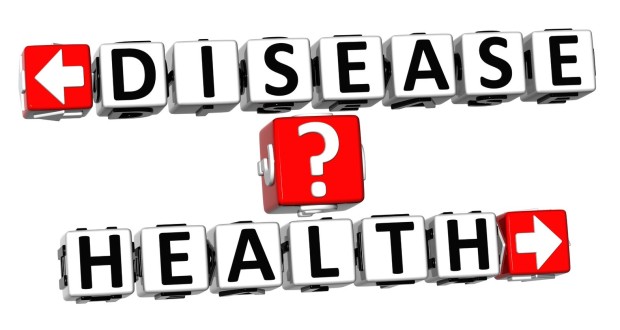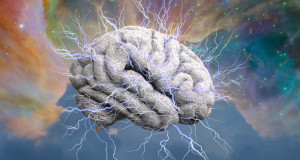Most of the diseases and various medical problems we encounter tend to do most of their damage inside our bodies. Sure, it’s pretty obvious to others when you’re sick with a cold, but your physical appearance isn’t radically altered (aside from have reddish skin around your nostrils from using so many tissues). In contrast, the calling card of a condition like hives is the alarming imprint it leaves on your skin. As distressing as hives can be, most cases can be treated with relative ease.
How Hives Affects the Skin
It would be putting it gently to claim that hives isn’t kind on the eyes. A patient in the midst of a hives outbreak usually develops numerous pale, red bumps on their skin. Often times these bumps are accompanied by red blotches, which can cover larges swaths of skin for sustained periods of time. Making matters worse is that hives is far from just a cosmetic problem; the bumps and discolored skin patches caused by hives can itch terribly, and even induce a burning or stinging sensation.
Virtually no part of the body’s surface is safe from the reach of hives, as hive bumps can develop on the back, chest, arms and stomach. Hives can also strike from the neck upward, appearing on your face, lips, tongue, ears and even inside the throat. The length of a hives outbreak can vary wildly; some are gone within an a few hours, while others persist for several days. Some particularly unlucky individuals suffer from chronic hives, a malady that causes prolonged outbreaks that last weeks or even months. In addition, some chronic hives patients experience recurring outbreaks of this condition.
Causes of Hives
If there is a silver lining to hives, it would be that it is often not caused by an infectious virus. Rather, hives symptoms frequently occur due to allergic reactions inside the body. When this is indeed the case, the patient is typically diagnosed with acute urticaria, which is generally regarded as a relatively mild form of hives. At most, acute urticaria lasts for a maximum of six weeks, though most cases vanish after 24 to 48 hours. Acute urticaria is also doubles as the most common form of hives; if you are unfortunate enough to develop this affliction it will probably be diagnosed as acute urticaria.
You would be correct in thinking that foods are often the culprit behind acute hives attacks; what may surprise you are the identities of the perpetrators. The foods most likely to induce a hives outbreak include nuts, fish, chocolate, tomatoes, fresh berries, eggs, soy, milk and wheat. Aside from chocolate, every item on that list has an otherwise solid reputation.
Hives can also appear if the body has an adverse reaction to certain medications. Non-steroidal anti-inflammatory medications (NSAIDs), common painkilling medications that can be bought without a prescription, can trigger hives. Hives symptoms can also develop in patients taking blood pressure medicines or prescription painkillers like codeine.
Another cause of hives is a familiar foe to millions of Americans – stress. Yes, the same thing that causes everything from sleepless nights to heart disease can also make you break out in hives. A stressful lifestyle can not only lead to acute hives, but can also worsen and prolong the chronic version of this skin condition.
The picture becomes much murkier when dealing with chronic hives. It can be quite challenging for doctors to pinpoint the reasons behind a patient’s persistent welts and skin blotches. In some cases, chronic hives is caused by an especially bad allergic reaction to one of the common hives triggers. Conversely, recurrent hives can be indicative of a more serious underlying condition, such as autoimmune disorders, hormonal disorders, chronic infections and malignancy.
Occasionally, hives can develop if the skin is exposed to certain environmental conditions or physical stimuli. Rashes and welts can appear, for instance, if areas of the skin experiences abnormally hot or cold temperatures, vibration, pressure and sweating. Certain exercise can also inadvertently cause hives outbreaks.
Treatment and Prevention
Given that there are several forms of hives, treatment can vary from patient to patient. For those with allergy-induced acute hives, the obvious solution is to remove the triggering factor from the patient’s diet or medicine cabinet. Unfortunately, this is often easier said than done, especially considering the large number of possible hives triggers. To answer this question, your doctor may conduct a series of diagnostic examinations, which could include allergy tests, blood tests and tests for other chronic diseases that can cause hives.
Successfully reducing stress is an easier nut to crack, though it still takes a good amount of consistent effort. Hives patients have a number of options when it comes to reducing their stress levels. Some proven methods include deep breathing, medication, exercise, yoga and listening to soothing music.
Of course, simply removing all of these stress and allergy triggers won’t immediately clear up your skin. To deal with existing blotches and bumps, try applying cloths soaked with cold water to the afflicted areas. Press these cloths against your skin for 15 minute stretches, and reapply them ever few hours. You can also try brewing some herbal tea; teas made from licorice, goldenseal and the devil’s claw herb all possess properties that can alleviate hives symptoms. Green tea is also makes for a solid choice. Aloe Vera gel, which is often used to treat burns, can help the body’s skin heal faster while keeping hives from spreading to unblemished areas.
Since chronic hives is frequently accompanied by other major diseases, treatment may be much more complex and less effective. As with milder forms of hives, various tests may be used to unearth previously undiagnosed allergies in the patient. In addition, doctors frequently use antihistamines to knock out hives symptoms, though such medications do not address the root causes of hives. Should this initial strategy prove ineffective, your doctor may resort to one of three different medications as a Plan B option – H2 antagonists, oral corticosteroids and tricyclic antidepressants. Each approach has drawbacks; H2 antagonists can cause intestinal issues and headaches, corticosteroids significantly weaken the immune system and antidepressant users may experience dizziness and drowsiness.
There is no denying that hives is a very unpleasant condition, one that can last for weeks and make daily life downright miserable. By working closely with your doctor, you can take major steps towards minimizing (if not eliminating) the impact of hives on your health.
 Natural Knowledge 24/7 Educate yourself with nutrition, health and fitness knowledge.
Natural Knowledge 24/7 Educate yourself with nutrition, health and fitness knowledge.






